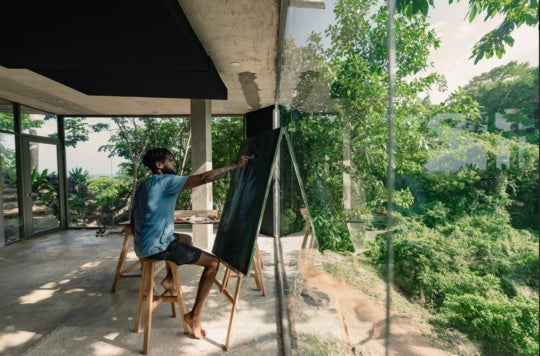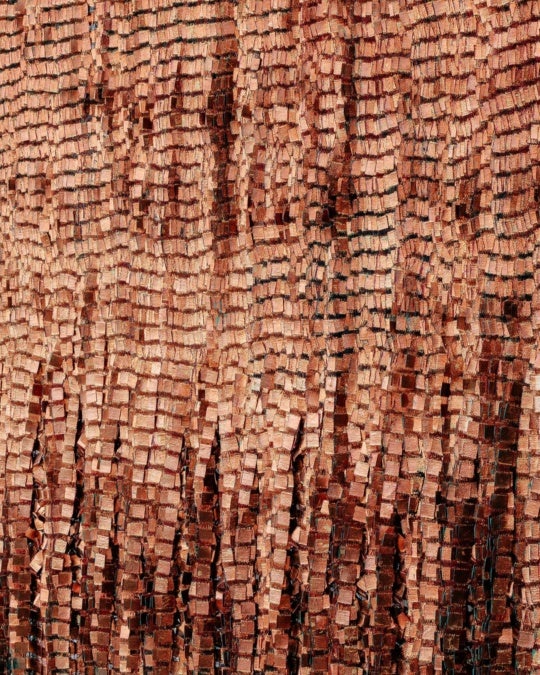This installment of Mood Ring features a condensed version of “Wasting My Beautiful Mind: Understanding the Poetics of Black Fungibility,” a lecture given by artist Yanique Norman at Atlanta Contemporary in October 2019, presented by the experimental art education platform Discrit. Norman’s original lecture text has been edited for publication and is presented here alongside a selection of images from the slideshow that accompanied it last fall. While other theorists, such as Saidiya Hartman, have conceived of Black Fungibility in terms of the commodification of Black bodies, Norman returns to the word’s etymological root: fungus itself.
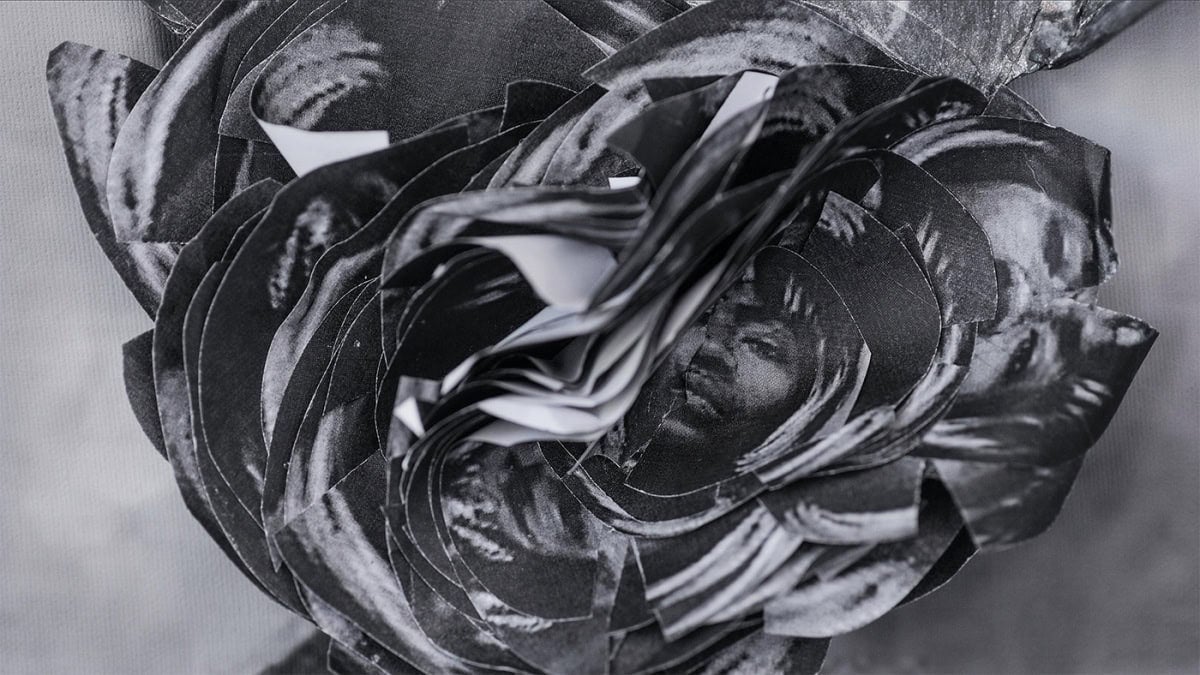
INTRODUCTION
Fungus is generally seen as incredibly disgusting, scary, and dangerous because it has the power to inflict unspeakable harm not only on entire environmental systems but on humans as well. Despite its terrible reputation, fungus nevertheless plays a vital role in many facets of human life. Likewise, the Black imagination is similarly mischaracterized, allegedly possessing a nefarious power that is often coded as negative. Although Blackness has been lauded in the literary arts, within pop culture any kind of Black cultural production is usually dismissed and denigrated due to its preconceived crassness by both white and Black elitists. Generally speaking, our larger society tends to be blind to the innumerable complexities of and differences between one expression of Blackness and another in the arts. This conundrum of Blackness is the product of its forced binary retelling, despite having an inherently idiosyncratic constitution at best.
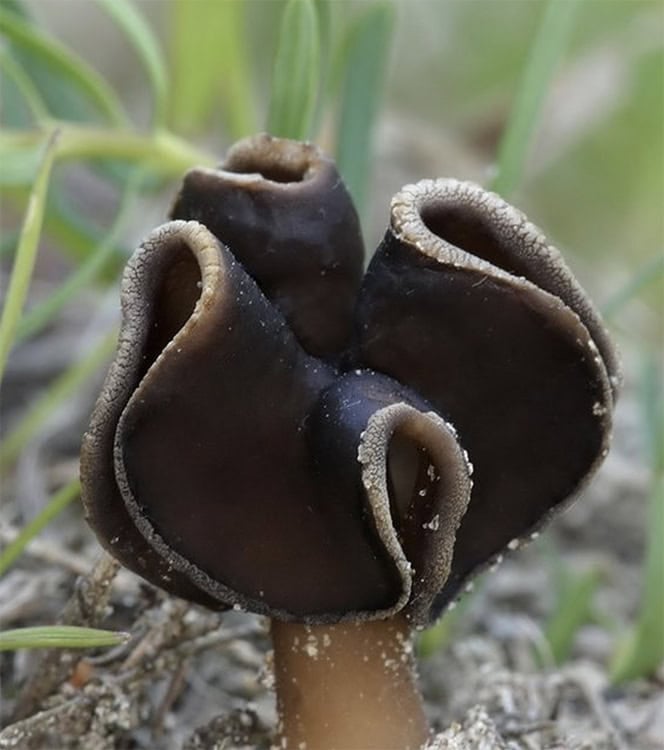
In these notes, I will, instead, present a collection of practices that provide roadmaps to those seeking new, self-affirming, and serpentine ways of producing Blackness and Black meaning. I call this collection of practices Black Fungibility. Under this mushroom umbrella, I’ve outlined four categories of cultural production, each borrowing its name from a certain class of fungi. Taken as a whole, Black Fungibility is an alternate dream model that provides artists, writers, and scholars a new way of viewing and imagining and producing Blackness.
There is a real crisis of the pop cultural imaginary that Black Fungibility seeks to correct. How many of our most popular expressions of Blackness fail to both represent and invent Black culture in all its fungible complexity? And in how many of these pervasive, flattened renderings of Black subjectivity can Black subjects, both on-and-off-screen, imagine another version of themselves?
DESCRIBING THE PROBLEM
What, exactly, is the alleged problem that Black Fungibility proposes to fix?
If you always bake a cake in a square pan, you always get a square cake. If you change the shape of the container to something different from a square, you are then more likely to get a differently shaped cake.
Black Fungibility is that radically shaped cake.
The contents of the cake may remain the same, but the container’s objective is not necessarily to alter the constitution of the cake per se but instead to alter its form.
Black Fungibility hypothesizes that changing the shape of the container may eventually change how one conceptualizes and goes about baking a cake.
CONTAINER PROBLEM I:
The Princess and the Frog (2009)
This 2009 animated film was a landmark for representation in the Disney franchise as it was the very first time that a Black princess starred in her own cinematic feature. Princess Tiana was an outlier, however, not just because of her race and Southern drawl but because she genuinely wasn’t a princess—her “royal” gown was actually a costume that her rich white bestie gifted her. Additionally, she was an anti-fairy femme fatale, scoffing at the very notion of magic and instead worshiping hard work. Life for Princess Tiana was a linear and circumspect little thing. Her biggest dream? It was nowhere close securing the affection of a man: she dreamed of having her very own restaurant. All she needed to get by in this Disneyesque world was herself. So when she finally met her foreign-born, Indian-looking, lazy, and bankrupt prince, it was a froggy heap of mess (a quintessential Megxit scenario). Tiana’s fairytale love-affair was quickly downgraded to a paltry bromance, so much so that her last-minute nuptials—one of the most visually stunning scenes throughout the entire film—were nonetheless incredibly forgettable.
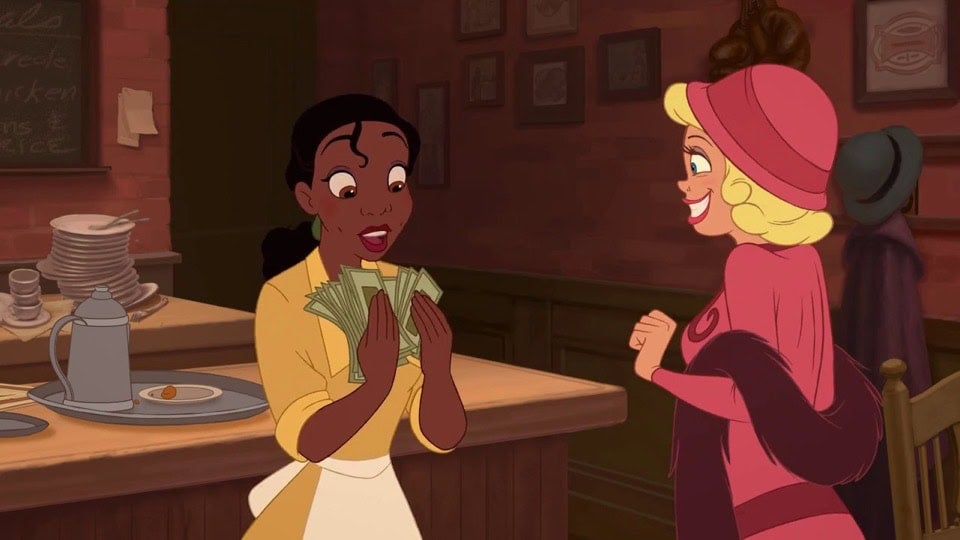
The imagination of the Princess container remains limited because its white creators, in their genuine attempts to be race-neutral, created a fantastical universe that was incapable of escaping the harsh realities of the ghetto. And subsequently, its Black protagonist (a bonafide ghettoite), was rendered powerless to conjure just enough magic to save only herself and her illegitimate prince. The film’s choice to blatantly ignore the rich and complicated histories of a segregated New Orleans in the ‘20s resulted in a picture that was not only conceptually dull but also rife with countless racist tropes, completely misrepresenting race relations as well as Black ambitions during this pivotal Jim Crow and Jazz Age era.
CONTAINER PROBLEM II:
Black Panther (2018)
Black Panther, like its Princess predecessor, marked a first in the Marvel cinematic universe—a Black protagonist who was supported by a predominantly Black cast. In addition, the film was exceptionally unique because it told a coming-of-age narrative from a purely African perspective. Everything about it—the language, the hairstyles, the costumes, the landscapes, and other cultural traditions—were faithful to the continent. In the film, King T’Challa (also known as the Black Panther) returns home to Wakanda to assume his rightful claim to the throne after his father’s untimely death. His reign is unexpectedly challenged, however, when a forgotten heir and nemesis, Erik Killmonger, gets wind of vibranium, the incredible resource that fuels the Wakandan economy, and becomes hellbent on making a transition of power a near impossibility for T’Challa.
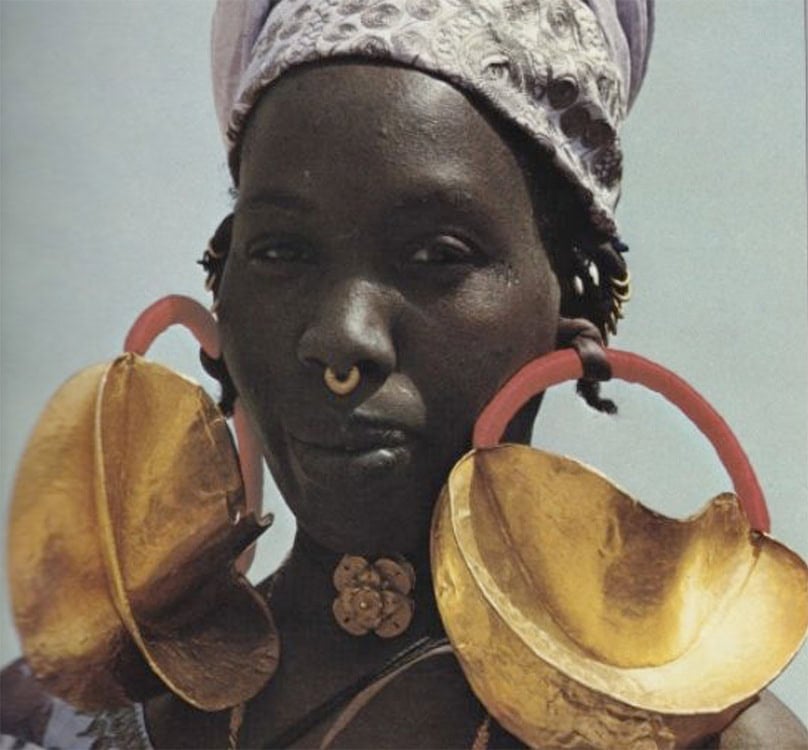
The Panther container is limited by its perpetuation of narratives of Black exceptionalism. Championing the mythology of DuBois’s talented tenth, the film suffers from a stubborn refusal to acknowledge those who fail to meet the highest mark. It also ignores the persistent divides that embroil integrationist and separatist camps who disagree on how to approach a multiracial society. None of these questions are addressed with sufficient rigor in the Panther film. King T’Challa maintains the status quo: as he attempts to keep Wakanda a utopian society that’s free from the ills of racism and all other -isms, Killmonger, his challenger, instead breaks from Wakandan convention by opting to share its vibranium treasures with the rest of the Black continent (that other ninety percent Dubois intentionally ignores) so as to alleviate generational poverty and promote greater parity with African nations’ predominantly white Western counterparts. The imaginative container of Panther falls back on default racial narratives, relegating Blackness into extreme binaries (being all good or all bad; having everything imaginable or having absolutely nothing at all). But skirting these ideological matrices and staying as far away as possible from the quicksand of race, colonialism, and power was a commercial necessity. Neither the studio nor film’s Black director, Ryan Coogler, wanted to alienate Marvel’s primary fan base—white men—and ruin its chances of hitting the franchise’s infinite gold mine—which, of course, it did spectacularly.
CONTAINER PROBLEM III:
Invisible Man (1952)
This seminal text by Ralph Ellison addresses many of the profound social and political concerns—as well as nationalistic and Marxist ideologies, and other intellectual and psychological questions—that were uniquely faced by Black people during the pre-Civil Rights era. The novel’s sole Black protagonist, devoid of both a literal and sociological body, is unduly trapped in a zombie-like existence. He is invisible yet nowhere dead. Although his invisibility does not preclude him from real-life sensations (as he’s still required to move through world as if he had an actual body), he’s nonetheless plagued by a psychic distress that prevents him from orienting and locating his own body. He lives a hellish, disembodied condition in which he frequently needs to electrocute his body with 1,369 lights and a barrage of Armstrong songs so as to temporarily forget his own apparent nothingness.
The issue at hand with the Invisible container is not necessarily its ambitions or approach but its author’s myopic view of possible future adaptations. Here Ellison makes his disembodied text to only exist within the literary universe, and thus forecloses the maximum potential of its cultural impact—which is, from a fungible perspective, highly problematic.
As it stands, Ellison’s text is already incredibly complex, and any faithful cinematic adaptation, at this historical juncture, would be nearly impossible to do. The Invisible container offers a cautionary tale for artists invested in the project of Black Fungibility, which maintains that the primary author of any text (in this instance, Ellison) should, while in the very act of its creation, consider the alternate formats in which future iterations of the work may be realized. This anticipation is necessary to ensure Black Fungibility’s propagation and posterity. In this sense, perhaps, Ellison’s missteps have become stepping stones for future authors who now understand the need to provide a precursory script to guide future adaptations of their own fungible works of literature.
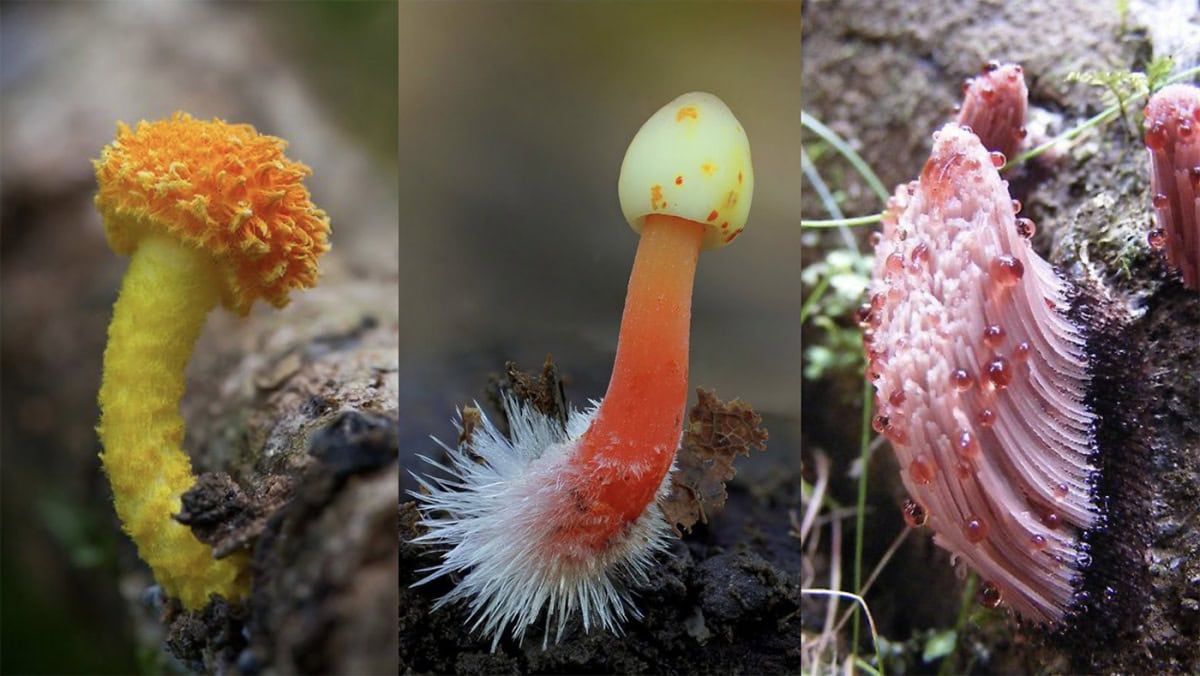
TOWARD A TAXONOMY OF BLACK FUNGIBILITY
The conditions of Black Fungibility can be understood through four categories of cultural production, a series of stages progressively approaching the highest levels of fungible consciousness. Works of art in each stage contain characteristics of works at the previous stage while still adhering to their own unique qualities.
Saprobes. Works at the introductory stage of Black Fungibility, typified here by The Princess and the Frog, are analogous to actual fungal saprobes. Like their biological counterparts, these metaphorical Saprobes behave like decomposers, perpetuating and being enriched by certain moldy, outdated, and decaying racist ideologies.

Symbionts. Works in the second, intermediary stage of achieving a low-level of fungible consciousness, such as Black Panther, are reflective of actual symbionts, organisms in a symbiotic relationship. Like their biological counterparts, metaphorical Symbionts present a united front despite their internal divisions, containing antagonistic mythologies that coexist without defacing or compromising the other’s unique ideological interiority.
Commensals. Works in the third stage of achieving a mid-level of fungible consciousness, such as Invisible Man, are analogous to actual commensals. Like its biological counterpart, the metaphorical Commensal has neither a skin nor a body—it is formless. Its signature is that the Commensal is an esoteric tongue. It is a living embodiment of a language—all alphabet, all syllabary, all letters, all words. A Commensal is more than just a text—it is more similar to a libretto in that it can only remain alive while in steady motion.
Zombies. Works in the fourth and final stage, which have achieved the highest level of fungible consciousness, have reached the Zombie state. Like its pathogenic fungal counterpart, it is characterized by the co-dependency between its three distinct parts: a Saprobe, a Symbiont and a Commensal assembled together. Their assemblage doesn’t automatically guarantee the creation of a Zombie work, because a a true Zombie can only be created if each of these three separate components work in complete unison with one another. All three parts must adhere to the same body—and consume its ideological corpse concurrently— so that infinite fissures combust simultaneously, resulting in a coveted Zombie. The ultimate, climatic goal of Black Fungibility is to reach and maintain a perennial and pervasive Zombie state where Blackness is imagined and understood in unprecedented forms.
There are currently no known Zombie works in the world today, which makes our task as artists more urgent than ever before.
CONCLUSIONS
The consequence of the previously discussed cultural works failing to achieve their imaginative potential is that one is left with a fractured view of Blackness. Asinine binaries, for better or for worse, don’t provide a true representation of Blackness at all. In the literary world, Blackness is often rendered meticulously in soft and complex gray hues, while, in the pop world, Blackness is rendered hastily in bold and garishly simplistic colors. Creating an arena-sized imaginative container to give space for the complex and mutable nuances of Blackness is key to pursuing the possibilities for freedom that Black Fungibility demands.
Black Fungibility is not an advocation for Blackness to be free from any form of criticism, ridicule, or scrutiny; nor is it a preventive measure for Blackness to be summarily and perennially lovely. Black Fungibility (especially when operating at its highest mode, the Zombie state) strives instead for the Black imagination to be less schizophrenic. This is only possible when Blackness is rendered equitably throughout all available media. It’s critical that the Black imagination adopt this fantastical dream toolkit—not because it lacks an already gorgeously seductive and bountiful mind, but, because of all this, it needs to protect itself to ensure its own posterity.
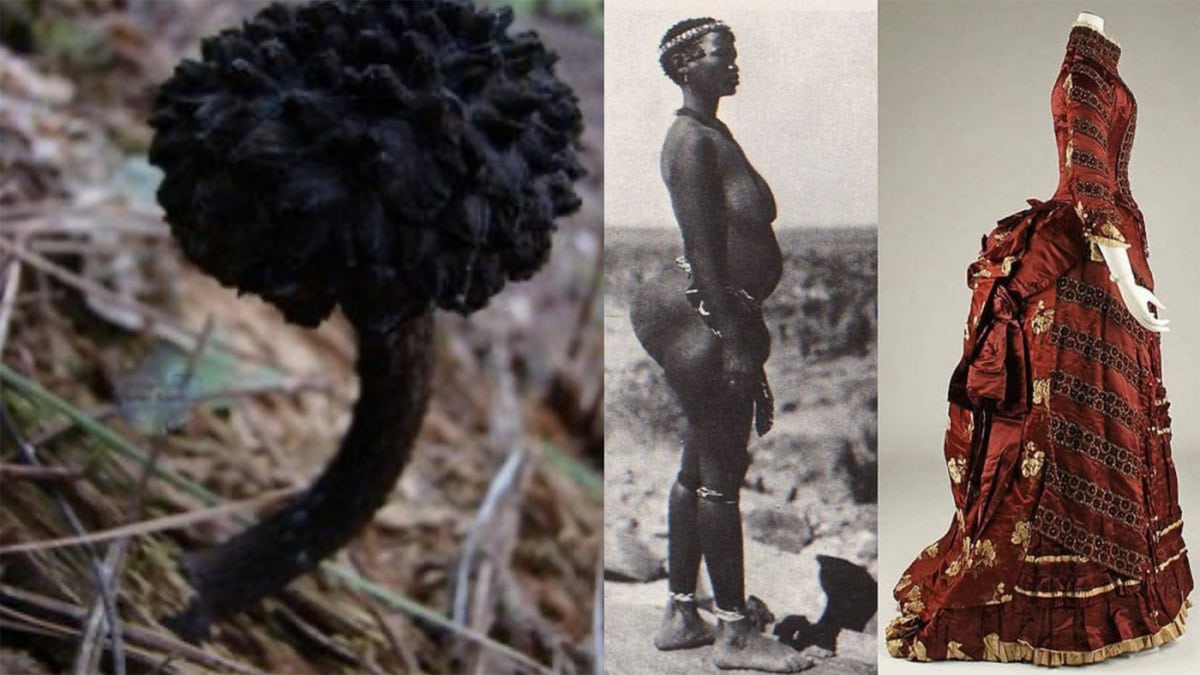
ELEVEN THESES ON BLACK FUNGIBILITY
Black Fungibility is an ideological dream model with no stable physical attributes. It’s always seeking a new container to hold its ever-expansive ideas. It’s a shapeshifter and an itinerant, and thus its aesthetic vernacular is subjected to continuous change;
Black Fungibility’s unique identity politics extend beyond racist tropes, imagining new futures that can both overpower and obliterate all racist ideologies;
Black Fungibility is neither anti-Black nor anti-white;
Black Fungibility is obsessed with its own interiority and the production of interior space;
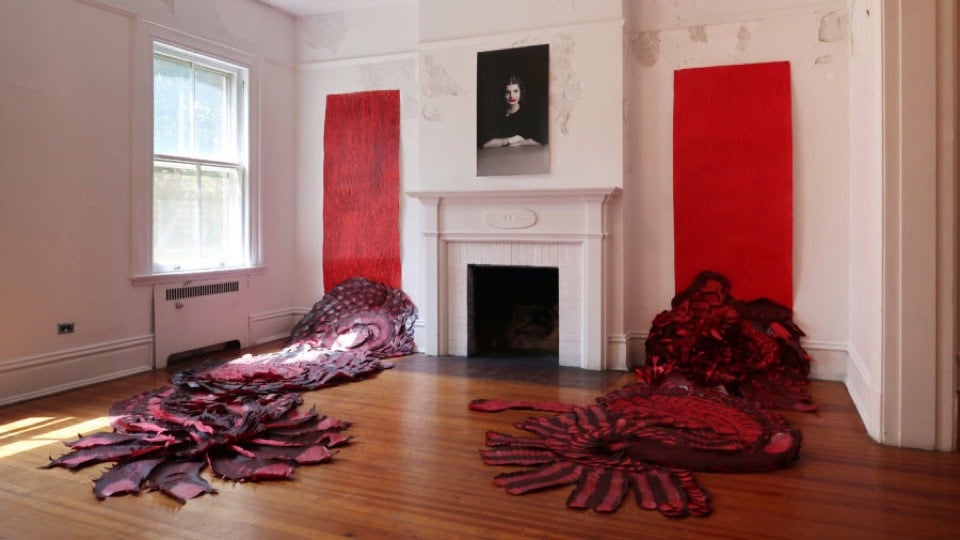
Black Fungibility strives to create symbiotic relationships between provocative ideologies and mythologies that generally don’t gel well together. Such a conceptual crisis tends to create a unique visual disjointedness—a primary aesthetic feature of fungible works;
Black Fungibility is deeply vested in tethering Blackness with mycology by incorporating scientific and other technologies to make conceptual mimicry feel more naturally genuine;
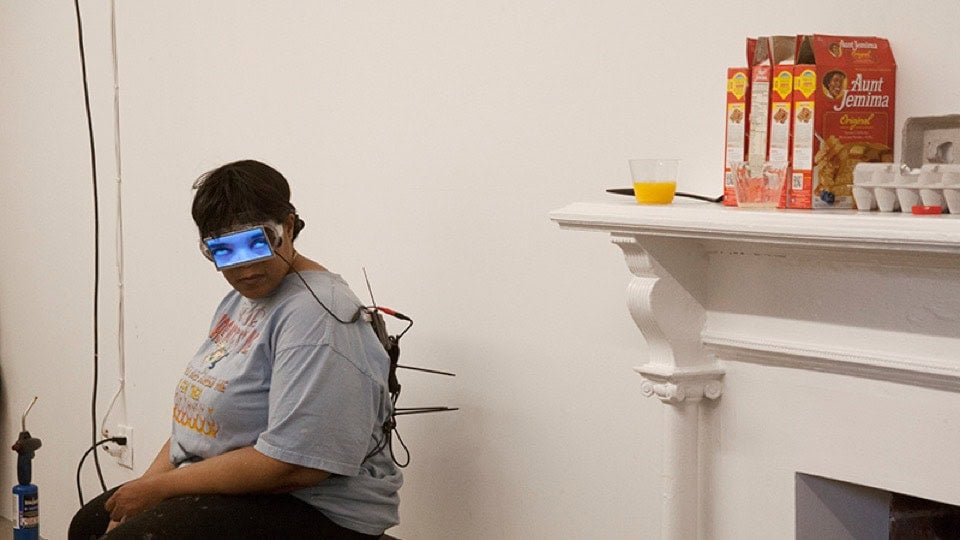
Black Fungibility is extremely sensitive to its physical environments and thus architectural, linguistic, and geographical overtures are key factors in unpacking the conceptual depth of fungible works;
Black Fungibility, especially within cinematic and linguistic forms, can be rendered three-dimensionally, both sonically and physically. Fungible works are notorious for toeing and blurring the lines between simulation and reality;
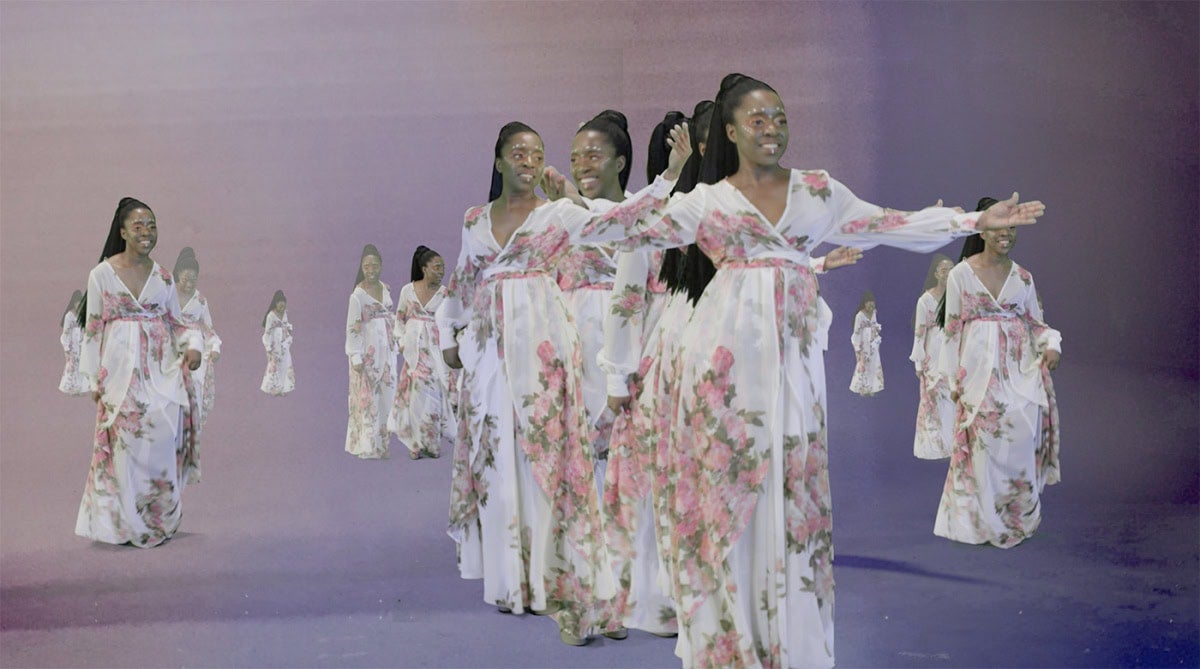
Black Fungibility possesses an alchemical, transformative, and biological component because of its propensity to turn ideas into physical objects, which are often rendered in unpronounced shapes and unheard of forms;
Black Fungibility is toxically narcissistic to the extent that it feeds on its own literal and psychic selves. It is simply incapable of looking outside at another—its occupation with its own interiority is unendingly consuming;
Black Fungibility is not just a mere abstraction; it is an actual physical embodiment of space. I imagine one day that it could fossilize sound.


